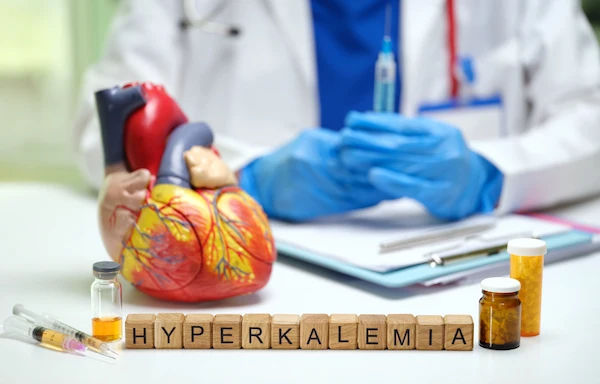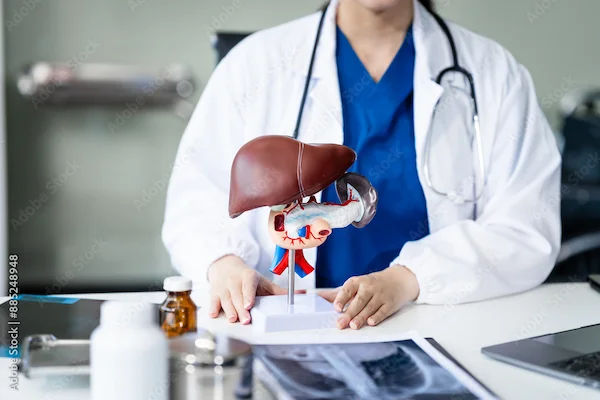Guide to Category/preventive_health_check
Know about preventive health care check, why it's important, how it works, screening as per age, core tests in it, preventive care, lifestyle screening and vaccinations and more.

Written by Dr. Mohammed Kamran
Reviewed by Dr. Rohinipriyanka Pondugula MBBS
Last updated on 21st Oct, 2025

Introduction
You don’t need a medical degree to protect your health; you just need a plan. A preventive health check is that plan in action: a structured set of screenings, vaccines, lifestyle assessments, and lab tests that catch problems early and optimise your wellbeing before symptoms appear. In this guide, we cut through the clutter and explain exactly what to expect from a preventive health check, who needs what and when, and which tests deliver the best value based on global guidelines and real-world evidence. You’ll learn how to tailor screenings by age and gender, prepare for your visit, interpret your results, and turn numbers into practical next steps. We also share ways to save time, like home collection. and reduce unnecessary testing, plus how to build a 12-month prevention calendar you’ll actually follow.
What Preventive Health Is and Why It Matters
Preventive health is the proactive side of medicine. Instead of waiting for a disease to cause symptoms, prevention aims to reduce risk (primary prevention), detect conditions early (secondary prevention), and limit complications when a disease is present (tertiary prevention). A category/preventive_health_check combines all three in a single, user-friendly experience—screenings, counselling, and vaccinations wrapped into an annual or periodic visit.
The biggest benefit is time, as high blood pressure, high cholesterol, and type 2 diabetes often develop silently over the years. Early detection allows lifestyle changes or medications to prevent heart attacks, strokes, and kidney disease. The World Health Organisation estimates 1.28 billion adults live with hypertension worldwide; almost half don’t know it. The International Diabetes Federation reports 537 million adults with diabetes globally, with many undiagnosed. Preventive checks pull these hidden risks into the light.
There’s also a clear value story. High-value screenings like blood pressure checks, colorectal cancer screening (from age 45–50, depending on guidelines), and cervical cancer screening substantially reduce serious illness and early death. Catching and treating hypertension costs far less than hospitalising for a stroke. And for working adults, prevention reduces absenteeism and improves productivity, benefits many insurers and employers now recognise through wellness coverage.
How do preventive health checks work?
A typical category/preventive_health_check includes intake and vital signs, blood and urine tests, age- and gender-appropriate screenings, and a clinician review to translate findings into actions. Most packages cover basics: CBC, fasting glucose or HbA1c, lipid profile, liver and kidney function, thyroid-stimulating hormone (TSH), vitamin D (sometimes), and urinalysis. Add-ons may include ECG, chest X-ray, ultrasound abdomen, and specific cancer screenings.
Who needs it and when, the reply is that it should be Annual preventive visits for a good default; however, evidence supports tailoring intervals. For example, normal blood pressure can be rechecked every 3–5 years in young adults but annually once you’re 40 or if readings are borderline [5]. Lipids might be checked every 4–6 years in low-risk adults and more often if you have diabetes, hypertension, or a strong family history. Cervical screening intervals vary by test type (Pap vs. HPV testing) and past results.
Evidence-Backed Screenings by Age and Gender
The screenings include:
Ages 18–29: building healthy baselines
- Blood pressure, BMI, and waist circumference are foundational. Screen for tobacco, alcohol, sleep, and mental health.
- Labs: fasting glucose or HbA1c if overweight/obese or with family history; lipid profile at least once to establish
baseline. - Women: cervical cancer screening starting at 21 (Pap every 3 years) or consider HPV testing from 25–30, depending on
local guidance. - Vaccines: HPV, Tdap/Td booster, MMR/Varicella if not immune.
- Lifestyle focus: contraception and reproductive health, sports injury prevention, skin protection.
Ages 30–39: metabolic risk creeps up
- Continue to monitor blood pressure annually. Lipids every 4–6 years, sooner if high risk.
- Diabetes screening with HbA1c or fasting glucose if BMI ≥25 (or ≥23 in many Asian populations) or other risk factors.
- Cervical screening per schedule; discuss family planning and preconception tests.
- Consider thyroid testing (TSH) if symptomatic or with family history; not as blanket screening.
- Vaccines: catch up on HPV; influenza annually; COVID-19 as recommended.
Ages 40–49: cardiovascular and cancer vigilance begins
- Assess 10-year ASCVD risk (cholesterol, blood pressure, smoking, diabetes status). This guides statins and aspirin
decisions. - Diabetes screening is more routine; HbA1c is convenient for home collection.
- Women: begin shared decision-making about mammography from 40 (varies by guideline) [4].
- Men: discuss pros/cons of PSA testing; shared decision-making is key.
- Consider baseline colon cancer screening at 45, depending on guidelines and family history.
Ages 50–64: high-value screening window
- Colorectal cancer screening is recommended (stool-based tests annually/periodically, colonoscopy typically every 10 years if normal).
- Mammography at recommended intervals (commonly every 1–2 years from 50 to 74).
- Bone health discussion (especially postmenopausal women or men with risk factors).
- Regular diabetes, lipids, blood pressure, and lifestyle counselling remain crucial.
65+: focusing on function, falls, and medication safety
- Continue cancer screenings based on prior results, life expectancy, and preferences.
- Prioritize falls risk assessment, vision/hearing, cognitive screening, and polypharmacy review.
- Vaccinations: influenza, pneumococcal, shingles (zoster).
Core Tests in a Preventive Health Check
- Vital signs, BMI, waist, and blood pressure
- Blood pressure and anthropometrics are simple yet powerful predictors. Elevated readings should be confirmed with
repeat measurements or home monitoring. WHO highlights undiagnosed hypertension as a major global gap. Waist
circumference adds insight into visceral fat and cardiometabolic risk beyond BMI.
Lipid profile, blood sugar, and HbA1c
A fasting lipid profile (TC, LDL, HDL, triglycerides) and a glucose measure (fasting plasma glucose or HbA1c) help
calculate 10-year ASCVD risk and detect prediabetes/diabetes. “Diabetes screening HbA1c fasting” is often asked—
HbA1c doesn’t require fasting and reflects 2–3 months of glucose control.
Thyroid, vitamin D, and B12—when are they truly needed?
TSH is useful if symptomatic, which includes fatigue, weight change. or with risk factors. Vitamin D and B12 testing
can be high-yield in regions with low sun exposure or dietary patterns, but routine population-wide testing isn’t always
necessary. Discuss with your clinician to avoid low-value testing.
Liver and kidney function panels
ALT/AST, bilirubin, and alkaline phosphatase screen for liver issues; creatinine and eGFR assess kidney function. Add
urine albumin-to-creatinine ratio for diabetes or hypertension.
Cancer screenings overview
- Cervical: Pap/HPV per schedule.
- Breast: mammography intervals by age/risk.
- Colorectal: stool tests vs. colonoscopy based on preference and access.
- Prostate: PSA for men after shared decision-making.
- Lung: annual low-dose CT for heavy smokers meeting criteria (age 50–80, 20 pack-years, quit within 15 years—varies
by guidance).
Vaccinations and Preventive Care You Shouldn’t Skip
Adult immunisations are core prevention. CDC’s adult schedule includes annual influenza, Tdap once with Td/Tdap boosters every 10 years, HPV catch-up (through age 26; some may benefit up to 45), shingles (zoster) from 50, and pneumococcal vaccines for older adults or those with certain conditions [6]. Local schedules may differ slightly; check national guidance.
For travellers, vaccines like hepatitis A/B, typhoid, yellow fever, or Japanese encephalitis may be recommended based
on destination. Immune-compromised individuals require tailored schedules. Keeping a digital vaccination record
linked to your preventive health check makes renewals easy.
Lifestyle Screening: Prevention Beyond Blood Tests
The screening and preventive blood tests include:
Mental health, sleep, and stress check-ins
Simple validated screenings (PHQ-2/PHQ-9 for depression, GAD-2 for anxiety) can flag issues early. Sleep duration
and quality affect metabolic and cardiovascular health. Chronic stress elevates blood pressure and disrupts glucose.
Nutrition, physical activity, tobacco/alcohol risks
Ask for a brief dietary assessment, like fibre, fruits/vegetables, ultra-processed foods, and added sugars. Physical
activity: aim for at least 150 minutes/week of moderate activity plus muscle strengthening twice weekly. Tobacco and
alcohol screening with brief counselling are among the most cost-effective interventions.
Oral and eye health as part of prevention
Oral health impacts cardiovascular and glycemic control. Eye checks detect diabetic retinopathy and glaucoma earlier.
Include dentist and optometrist visits in preventive health care.
Special Populations: Tailoring Your Health Check Plan
These include:
Women’s health considerations
Beyond cervical and breast screening, consider PCOS screening where indicated (menstrual irregularity, hirsutism),
preconception counselling (folate, rubella immunity), and bone health post-menopause. For women 30–40, a focused
“women’s preventive health screening” can align with reproductive plans.
Men’s health
Testicular self-exam education, metabolic risk assessment (waist, lipids, BP), and shared decision-making on PSA after 50 (earlier if high risk).
Seniors
Prioritise falls risk, cognition, hearing/vision, and medication review to reduce polypharmacy harms. Vaccinations
(influenza, pneumococcal, zoster) are high-impact.
High-risk groups
Family history of early heart disease, specific ethnic risks (e.g., higher diabetes risk at lower BMI in South Asians), and
occupational exposures call for earlier or additional screening. National programs (e.g., India’s population-based
screening starting at age 30) may offer free or subsidised checks.
How to Prepare for Your Preventive Health Check?
The preparation of preventive health checks include:
Fasting, medications, and menstrual cycle timing
- Fasting 8–12 hours is typical for fasting glucose and triglycerides; HbA1c does not require fasting.
- Take usual medications unless told otherwise. Some tests (like thyroid) aren’t sensitive to meal timing; others are.
- Women should schedule cervical screening when not menstruating for optimal sample quality.
Interpreting Results and Next Steps
The results explanation includes:
Risk scores (ASCVD, diabetes risk) and what do they mean?
Use 10-year ASCVD risk calculators to decide on statins or other therapies; pair with lifetime risk discussions for
younger adults. For diabetes risk, combine HbA1c with waist circumference and family history.
When to consult a doctor and plan follow-ups
Mild abnormalities often need repeat testing and lifestyle changes; persistent or significant abnormalities warrant
clinician review. If symptoms persist beyond two weeks or if abnormal values worry you, consult a doctor online with
Apollo24|7 for further evaluation. Clinicians can personalise intervals and avoid over-testing.
At-home sample collection and remote monitoring
Home collection (for HbA1c, vitamin D, lipids) increases adherence, especially for busy professionals. Apollo24|7
offers convenient home collection for tests like vitamin D or HbA1c, helping keep your
category/preventive_health_check on track without clinic visits.
Building Your Personal Prevention Plan
SMART goals and a 12-month calendar
Set Specific, Measurable, Achievable, Relevant, and Time-bound goals: e.g., “Walk 150 minutes weekly by week 6.”
Block your annual category/preventive_health_check, flu shot month, dental cleanings twice yearly, and an eye exam
yearly if you have diabetes.
Tracking tools: apps, wearables, and reminders
Use a health app to centralise labs, vaccines, and reminders. Wearables can nudge activity, sleep regularity, and heart-
rate variability. Pair digital data with clinical results to adjust your plan quarterly.
Myths and Facts About Preventive Checkups
These include:
Over-testing and false positives, and how to avoid them
Myth: “More tests mean better care.” Fact: Unnecessary testing can lead to false positives and anxiety. Stick to
evidence-based screenings tailored to your risk.
Radiation fears: understanding screening doses
Most screening exposures (e.g., mammography) are low. Balance potential harms with clear benefits; discuss
alternatives like ultrasound for specific scenarios.
“I feel fine, so I don’t need screening”
Many risks are silent for years. Prevention is most powerful before symptoms arrive. Your
category/preventive_health_check is about staying well, not just finding illness.
The Future of Preventive Health
Wearables and digital biomarkers include continuous heart rate, rhythm alerts for AFib, sleep stages, and VO2 max
estimates offer early signals. These tools complement, not replace with clinical care.
Genetics and precision prevention, including pharmacogenomics, can refine medication choices; family history plus
selected genetic markers may personalise cancer screening in high-risk individuals.
AI risk prediction and continuous screening are AI models that can integrate with labs, vitals, and wearable data to
predict risk more accurately. Expect your preventive health check to feel less like an annual snapshot and more like a
dynamic, year-round prevention program.
Conclusion
Preventive care is not a luxury—it’s the single most powerful, cost-effective way to protect your health. A
category/preventive_health_check transforms prevention into a simple, annual routine: check your vitals and labs, align screenings with your age and risk, update vaccinations, and fine-tune lifestyle habits that compound over time. The strongest evidence supports a focused set of screenings—blood pressure, diabetes, lipids, and age-appropriate cancer tests—plus proven counselling on physical activity, nutrition, and tobacco/alcohol use. From there, personalise: add tests only when your history or initial results suggest benefit, and align intervals with guideline-backed schedules.
Your next step is a simple preventive health check, gather last year’s results, and write down three goals you want to achieve. If anything in your results concerns you, or if symptoms persist beyond two weeks, consult a doctor online with Apollo24|7 for personalised guidance and timely follow-up. Prevention works best when it’s proactive, personal, and consistent—starting today.
Consult a Top General Practitioner for Personalised Advice
Consult a Top General Practitioner for Personalised Advice

Dr Suseela
General Physician
5 Years • MBBS
Bengaluru
Apollo Medical Center, Marathahalli, Bengaluru

Dr. Rajib Ghose
General Physician/ Internal Medicine Specialist
25 Years • MBBS
East Midnapore
VIVEKANANDA SEBA SADAN, East Midnapore

Dr. Tapabrata Ray
General Physician/ Internal Medicine Specialist
4 Years • MBBS,DGM,CPMeC,ACMDC
Kolkata
MCR SUPER SPECIALITY POLY CLINIC & PATHOLOGY, Kolkata

Dr. Sougata Kumar
General Practitioner
8 Years • MBBS
East Midnapore
VIVEKANANDA SEBA SADAN, East Midnapore

Dr. Abhirup Chakrabarti
General Practitioner
10 Years • MBBS
Chennai
Dr Abhirup Chakrabarti, Chennai
More articles from General Medical Consultation
Frequently Asked Questions
1) How often should I do a category/preventive_health_check?
Most adults benefit from an annual preventive visit, with some tests (like lipids) at longer intervals if low risk. High-risk individuals may need more frequent checks based on age-wise screening guidelines.
2) Which tests are essential in a preventive health check package?
High-value basics include blood pressure, BMI/waist, fasting glucose or HbA1c, and a lipid profile. Add age-appropriate cancer screening and vaccinations. Other tests (TSH, vitamin D) are based on symptoms and risk.
3) Do I need to fast for my preventive health check?
- Fast 8–12 hours for fasting glucose and triglycerides. HbA1c does not need fasting. Confirm instructions when you book your category/preventive_health_check.
4) How can I reduce the cost of a full-body checkup test list?
Focus on guideline-backed screenings, avoid low-yield add-ons, use insurance/wellness benefits, and consider home collection bundles. Ask your provider to map tests to recommendations like the USPSTF.
5) What if my results are borderline?
Many borderline results improve with lifestyle changes. Recheck after 3–6 months. If values worsen or symptoms appear, consult a doctor online with Apollo24|7 for tailored advice and follow-up testing.




